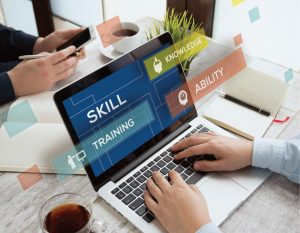The Value of Simulations in Life Sciences Training
Technology – By Robert Brodo
Industry changes put pressure on life sciences business professionals to perform
and deliver.
 For years, medical professionals and educators have recognized that learning in simulated environments can contribute considerably to improving medical care by boosting medical professionals’ performance and enhancing patient safety. A primary characteristic of simulation-based medical training is its unique approach to making, and then learning, from mistakes, which is regarded by all medical and learning professionals alike as a powerful educational experience that provides an opportunity for professional improvement and long-term growth.
For years, medical professionals and educators have recognized that learning in simulated environments can contribute considerably to improving medical care by boosting medical professionals’ performance and enhancing patient safety. A primary characteristic of simulation-based medical training is its unique approach to making, and then learning, from mistakes, which is regarded by all medical and learning professionals alike as a powerful educational experience that provides an opportunity for professional improvement and long-term growth.
The assumption underlying simulation-based medical training is that increased practice in learning from mistakes and error management in the simulated world will reduce occurrences in real life and will provide professionals with the best approach and skills to cope competently with those mistakes and outcomes that couldn’t be prevented.
Today, life sciences professionals in parts of the industry such as pharmaceutical products, medical devices, medical equipment and other elements of the ecosystem, face the same critical learning challenges as the medical professionals performing surgery and providing care to patients. The primary challenge is to deliver to customers and stakeholders within the ecosystem products and services
that add value and make a difference.
However, unlike medical professionals who go to school for years, many life sciences professionals working for large companies don’t have the option of continuing education and therefore lack certain skills in the areas of business acumen, business leadership and strategic business selling.
Changes in the industry and increased focus on growth, profitability, cash flow and shareholder value continue to put pressure on life sciences business professionals to perform and deliver quarter after quarter. With increased consolidation and continuing cost pressures, business acumen skills can mean the difference between success and failure for the professional and ultimately the company they work for. The good news is that business simulations – much like their medical counterparts – are more sophisticated and more powerful than ever!
 By way of example, consider the 2,700 marketing professionals who work for a large global pharmaceutical company. In the “real world,” they are responsible for commercializing new innovative products and achieving lofty sales targets through the execution of a complex business strategy and plan. Unfortunately, many of these professionals are great marketers and understand the difference between search engine optimization and payperclicks, however they don’t understand how to read their own profit & loss (P&L) statements and calculate the return on investment of their marketing spend.
By way of example, consider the 2,700 marketing professionals who work for a large global pharmaceutical company. In the “real world,” they are responsible for commercializing new innovative products and achieving lofty sales targets through the execution of a complex business strategy and plan. Unfortunately, many of these professionals are great marketers and understand the difference between search engine optimization and payperclicks, however they don’t understand how to read their own profit & loss (P&L) statements and calculate the return on investment of their marketing spend.
As part of a new simulation-based training initiative, they were immersed in a simulated company that came to life on their smart phones for 10-20 minutes a day. Each day they were provided with new information via “emails,” “text messages” and other important information about their simulated company. In addition, they were provided with short, 2-3-minute micro-learning lessons on business acumen, and then provided the opportunity to make decisions and learn from their mistakes in the simulation.
Working as both individuals and teams, they accumulated points for success and their performance in the key financial metrics of their real company drive the leader-boards of their simulated companies. After completing the 5th year of their simulation, they were then required to develop a virtual presentation to their board of directors, which was conducted utilizing an online video-based platform so colleagues around the globe could participate and learn even further.
Over a period of three months, learners spent about 25 actual hours in the simulated learning experience and at the conclusion learned-by-doing:
- How to read and analyze their P&L statement.
- How to read and analyze their balance sheet.
- How to drive cash flow specifically controllable such as working capital.
- How to conduct an analysis on the short-term and long-term investments in marketing (including calculating the net present value and time cost of money).
- The critical drivers of shareholder value including the relationships between investments in research & development and the investments in sales and marketing.
Simulation-based training transcends all professions and now has reached a point of maturation where great simulations are available to life sciences professionals.
Running their own simulated companies in a competitive market also developed skills in the areas of deep competitive analysis and the ability to understand market segments and the demand drivers of those targeted segments. In today’s complex healthcare environment, this helped develop skills by making mistakes and trying new things in the simulation such as messaging, positioning and disruptive digital strategies. Ultimately, participants of the simulation were able to have a much deeper understanding and appreciation for the needs and decision-making drivers of:
- Managed care decision-makers
- Providers
- Payers
- Patients
- Caregivers
In summary, the concept of simulation-based training transcends all professions. It now has reached a point of maturation where great simulations are available to life sciences professionals who are ready to make mistakes in a simulated world and learn from them, so they can outperform in the real world.
Robert Brodo is CEO of Advantexe. Email Robert at Robert.brodo@advantexe.com.








